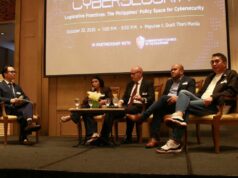Navigating new opportunities in commerce
Winning together in the fourth industrial revolution
By Mark Louis F. Ferrolino, Special Features Writer
People are becoming more sophisticated; they now demand for faster and more convenient options of doing things. The continuous rise of e-commerce is one of the most obvious outcomes of this changing behavior. Gone are the days when consumers endure the hassles of in-store shopping; they can now order almost everything online in one click. The face of commerce is, indeed, undergoing a seismic shift, and the transition will likely continue with the emergence of new technologies arising from the Fourth Industrial Revolution, also known as Industry 4.0 or IR 4.0.
The third panel discussion of the recently held BusinessWorld Industry 4.0 Summit touched on the opportunities in Philippine commerce during the upcoming IR 4.0. Industry and government leaders, including Department of Trade and Industry Assistant Secretary Mary Jean T. Pacheco, Anti-Red Tape Authority Deputy Director-General Ernesto V. Perez, Philippine Chamber of Commerce & Industry President Alegria S. Limjoco, Philippine Retailers Association Rosemarie B. Ong, and Philippine Chamber of Telecommunications Operators Vice-President Roy Cecil D. Ibay, sat as the panelists and shared interesting insights on the topic.
In a short presentation, Ms. Pacheco discussed the drivers and opportunities of e-commerce in the country, with 124.2 million mobile subscription, 76 million active Internet users, and an average of 10 hours Internet usage daily. In addition to these, the country, she said, is also comprised of a young population, a demographic that drives e-commerce.
However, in terms of online purchases, the Philippines still lags behind other countries, Ms. Ong said. “It’s not parallel to the number of users,” she said. In her observation, retailing is going back to basic. In fact, top mall operators, such as SM, Ayala and Robinsons, are keep on expanding, according to her.
“Of course, the technology is there but no matter how you talk about robots, no matter how you talk about AI (artificial intelligence), at the end of the day, it’s really something about how you serve the customer,” Ms. Ong said. “The new currency now, really, is the customer experience.”
The call for all retailers now, as Ms. Ong emphasized, is to be omnipresent and serve customers in a seamless way. Retailers, she said, should look at emerging technologies as enablers to complement their businesses and not as disruptors.
“Use technology to enhance your business and don’t be bothered about being disrupted. I think, for retail, we should focus on whether our competitors are using it (technology) better than us,” Ms. Ong said.
Meanwhile, Ms. Limjoco during the discussion also raised concerns on the need to prepare for the future of work, which will include AI and robots. She said robotics training courses must be given to students at least when they are in grades 11 and 12. “At a young age, they should learn robotics,” she said.
In terms of regulating emerging innovations and businesses, the government, according to Mr. Perez, always ensures the welfare of the public by making sure that each regulation is attuned with the current trends.
“Part of the function of the government is to ensure that the public is fully protected so these businesses will not cause hazard to public health or safety. Therefore, each regulation must be attuned with these emerging technologies,” he said.
For his part, Mr. Ibay said the challenge for the local government now is to balance the new and upcoming technologies and the interests of local players.



